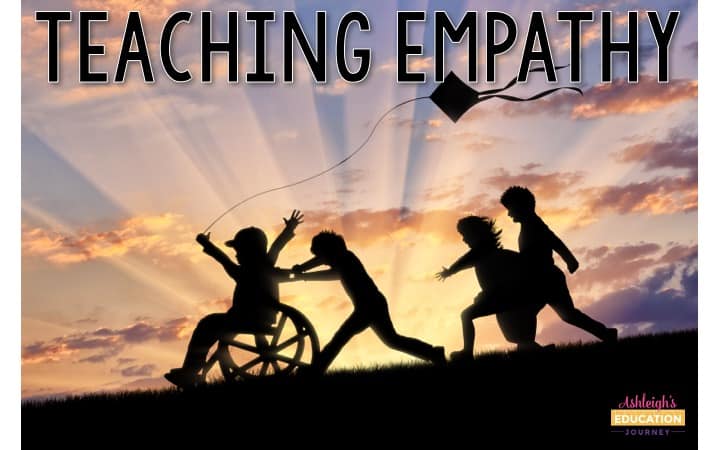
I don’t know that it’s possible to overstate the importance of empathy in the classroom. It is pure joy for me to watch children who are naturally empathetic work with their classmates. I watch them carefully weigh their words and actions as they think about how those words and actions will make their classmates feel. Just this year, I saw a student consoling another student who had recently lost his dog. I’ve also taught students who significantly lack in empathy, whether they’re unaware of how they make other students feel or if they’re aware and choose not to adjust their words and actions. I see intentionally and unintentionally exclude each other, and other students joke and tease past the point of being funny. Empathy is the ability to understand and share the feelings of another. Everyone is born with different levels of empathy, but it is a skill that can be learned and developed. This post shares six methods for teaching empathy, so it can be developed and promoted in the elementary classroom.
1. Teaching Empathy Through Modeling
Teachers can be role models who show students the power of empathy in relationships. Children learn empathy both from watching us and from experiencing our empathy for them. Be a consistent example of empathy, and exude a caring, compassionate, understanding attitude.
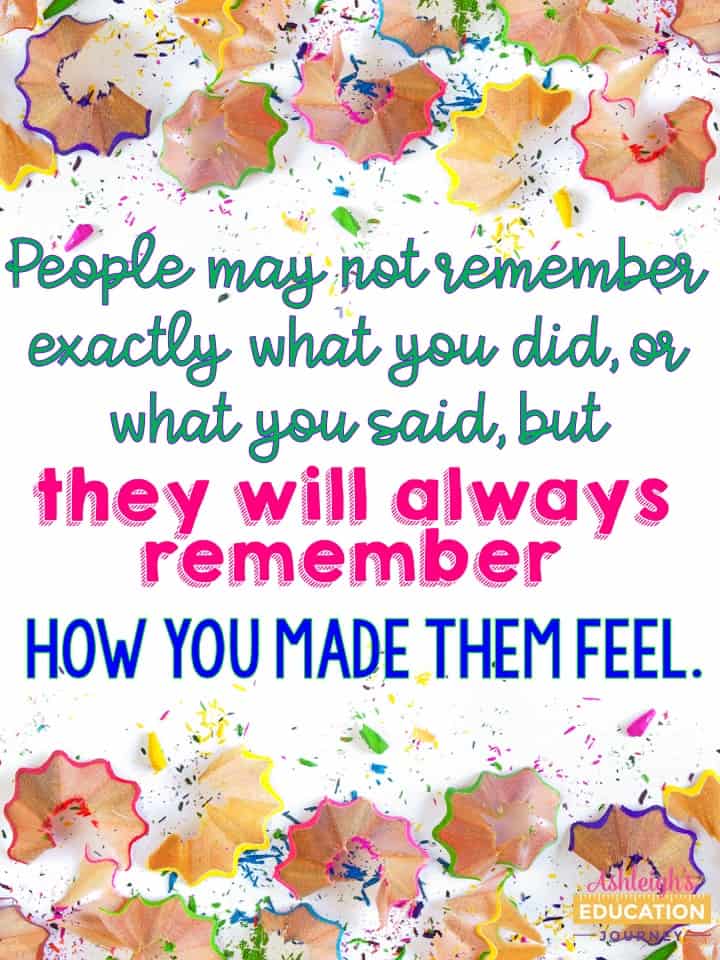
2. Recognize Emotions
Because of today’s digitally focused world, students’ abilities to recognize human emotions is steadily decreasing. However, before students can empathize, they must be able to read emotions. When a student is displaying their own negative emotions, ask them to explore and identify their feelings. “What emotion do you think you are feeling right now? Help students make connections between their emotions and their reactive behaviors.
The great thing about teaching emotions is that this ties in with my inference lessons in reading. One of my favorite games to teach emotions and inferences is through this easy to prep Taboo-like game. I write a list of emotions on a large piece of chart paper, and for each one, I make an index card with just that word on it. One student selects an index card, and does not look at the word on the card. I show everyone, except the student selected, the emotion card. Like in the game Taboo, the selected student tries to select the emotion they may be feeling. Their classmates may give them clues about how they may look or act when one feels that emotion. When the student accurately guesses the emotion, we select a new player.
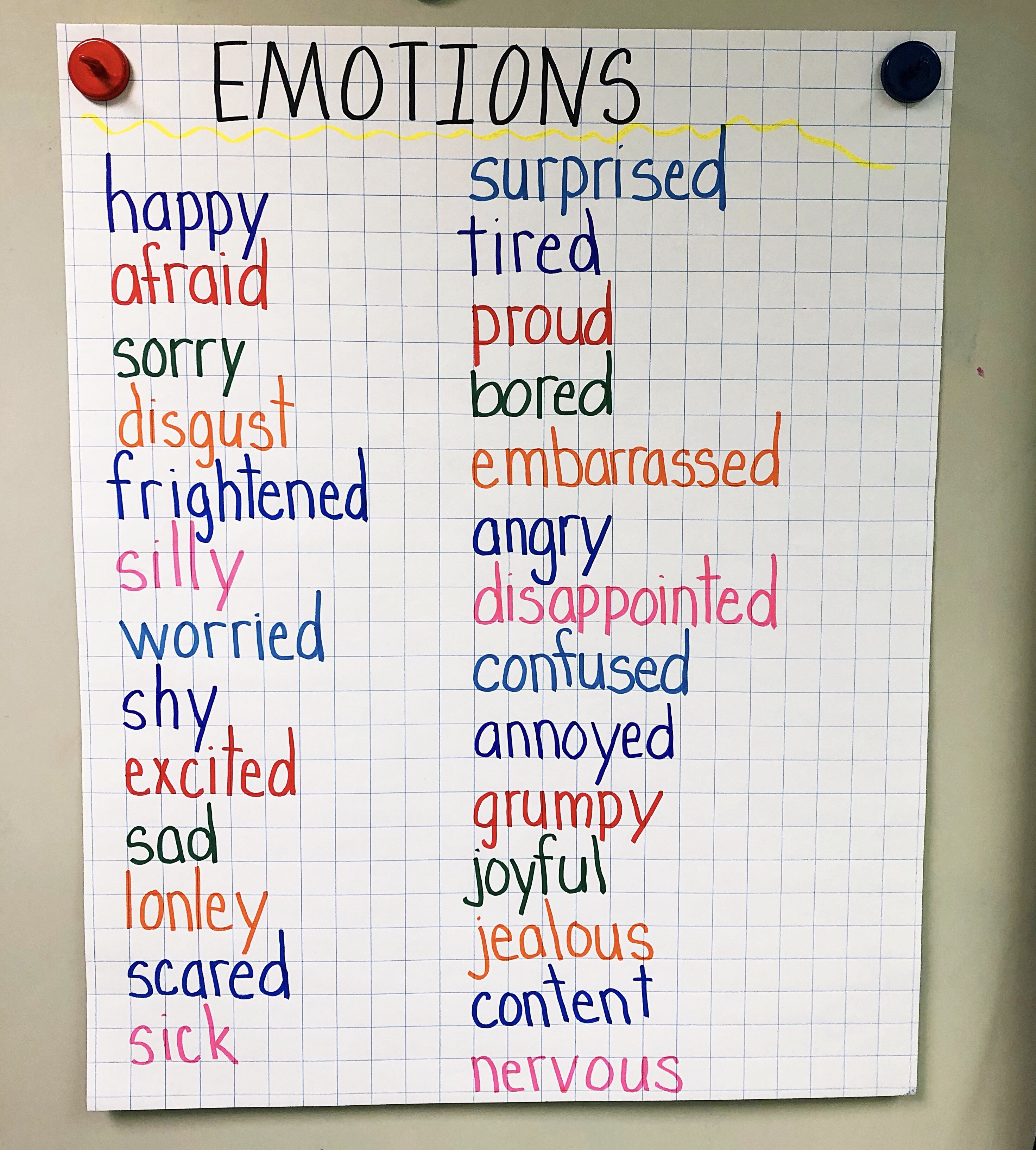
3. Active Listening
There are five key active listening techniques students can use to become a more effective listener. The first is to pay attention. Good listeners give the speaker their undivided attention, and look at the speaker directly. The second technique is that the listener should also show that s/he is listening with their own body language and gestures. A third technique is to provide feedback and to try to understand what someone else is saying. This may require the listener to reflect on what they hear and to ask questions. The fourth technique encourages the listener to avoid interrupting with counter arguments. The fifth step is to respond appropriately, as the listener should be respond openly and respectfully.
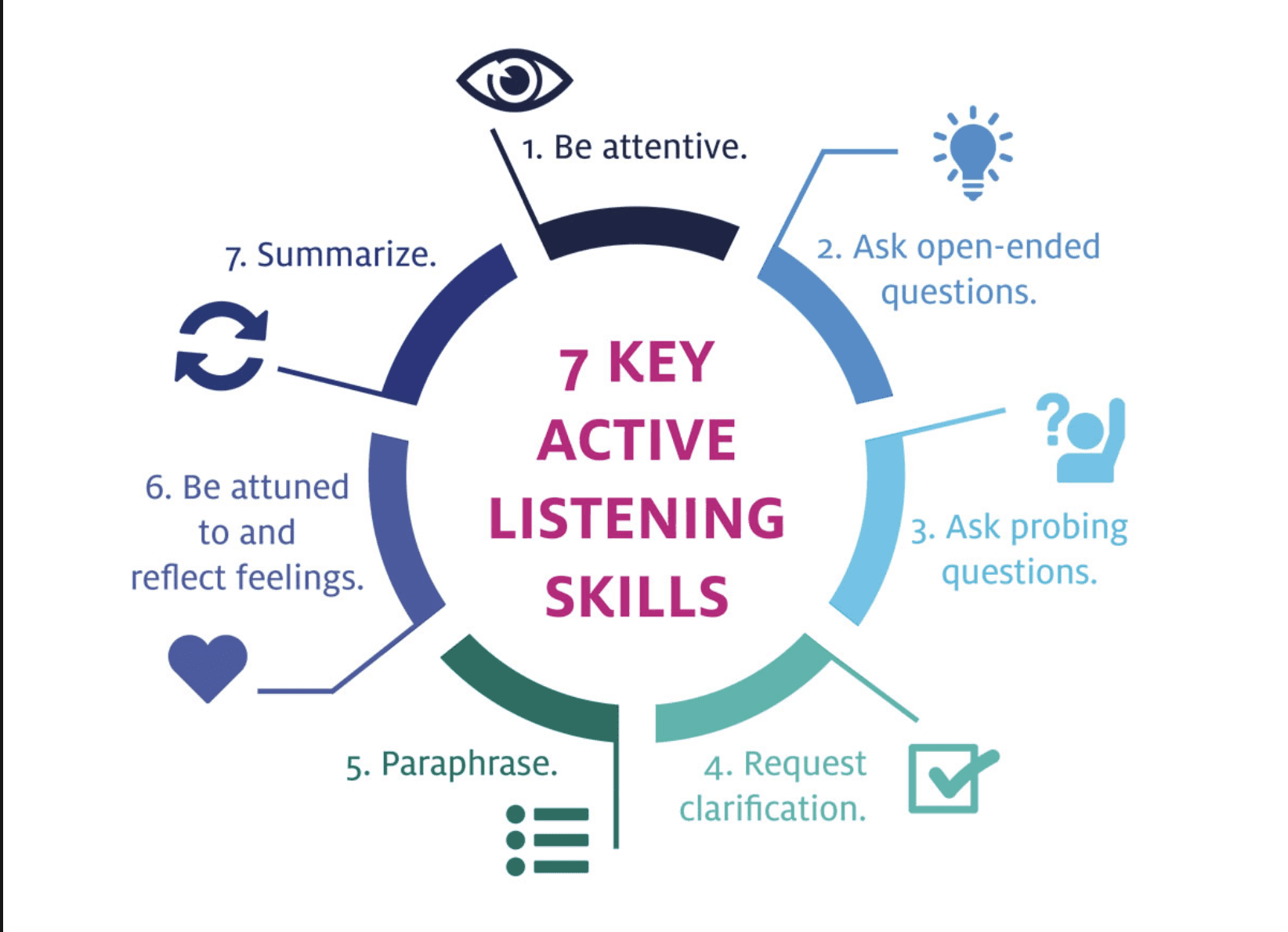
4. Point of View
Perspective taking is crucial for today’s students. Whether it’s debating an issue from various sides, or seeing an event from point of view, perspective taking can lead students to question assumptions. Stepping into another’s shoes helps kids understand others and is helpful for teaching empathy. During our American Revolution unit, students write two newspaper articles about the Revolution: one for a patriot newspaper and one for a loyalist newspaper. This works with almost any major historical event or scientific discovery.
You can also encourage perspective taking with current events or issues within the classroom. For example, every year one of my students has a birthday party where not everyone is invited. Even if the invitations are not passed out at school, word still gets around, and feelings are hurt. Before such incidents, I like to think of real-life examples and have students analyze the different perspectives of each person involved. You can download the form below here.
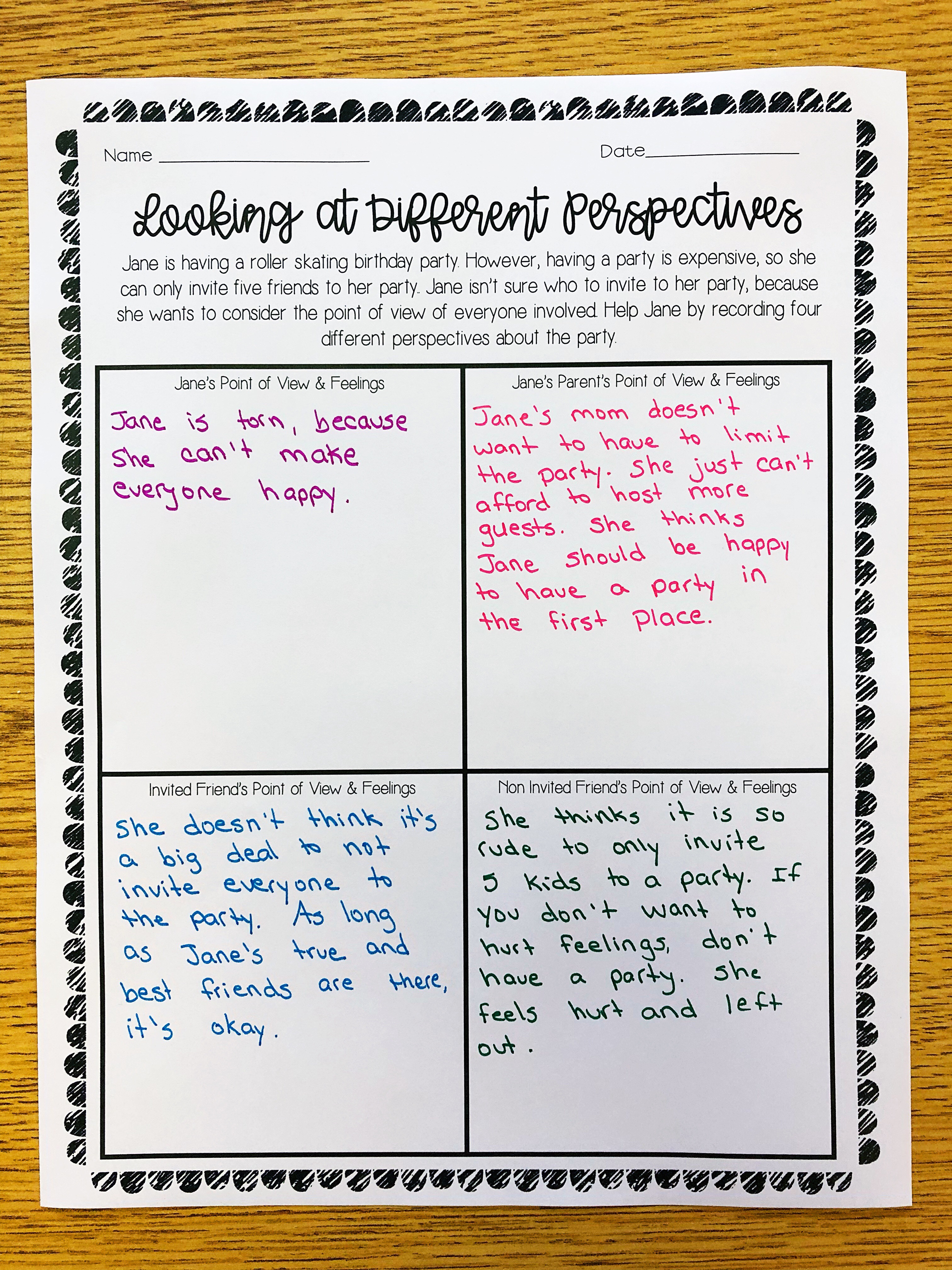
5. Literature for Teaching Empathy
I consistently read mentor texts in my reading and writing workshop. I love finding books that can also be used in teaching empathy and lend themselves to discussions about how we could have handled a situation differently. A Cambridge University study by Maria Nikolajeva, professor of education, found that “reading fiction provides an excellent training for young people in developing and practising empathy and theory of mind, that is, understanding of how other people feel and think”. Neuroscience backs this up. Researchers at Emory University in Atlanta, US, say that fiction tricks our brains into thinking we are part of the story. The empathy we feel for characters wires our brains to have the same sensitivity towards real people.
Understanding the perspectives of people who we don’t like very much is a key element of empathy, so I often choose books with non-favorable characters. I also select books where students will find both similarities and differences between themselves and the main character. I want students to be able to relate to the text.
Invisible Boy – This is one of my favorites! Meet Brian, the invisible boy. Nobody ever seems to notice him or think to include him in their group, game, or birthday party . . . until, that is, a new kid comes to class. When Justin, the new boy, arrives, Brian is the first to make him feel welcome. And when Brian and Justin team up to work on a class project together, Brian finds a way to shine.
Those Shoes – All Jeremy wants is a pair of those shoes, the ones everyone at school seems to be wearing. Though Jeremy’s grandma says they don’t have room for “want,” just “need,” when his old shoes fall apart at school, he is more determined than ever to have those shoes, even a thrift-shop pair that are much too small. But sore feet aren’t much fun, and Jeremy soon sees that the things he has — warm boots, a loving grandma, and the chance to help a friend — are worth more than the things he wants.
One – Blue is a quiet color. Red’s a hothead who likes to pick on Blue. Yellow, Orange, Green, and Purple don’t like what they see, but what can they do? When no one speaks up, things get out of hand — until One comes along and shows all the colors how to stand up, stand together, and count. As budding young readers learn about numbers, counting, and primary and secondary colors, they also learn about accepting each other’s differences and how it sometimes just takes one voice to make everyone count.
Last Stop on Market Street – Every Sunday after church, CJ and his grandma ride the bus across town. But today, CJ wonders why they don’t own a car like his friend Colby. Why doesn’t he have an iPod like the boys on the bus? How come they always have to get off in the dirty part of town? Each question is met with an encouraging answer from grandma, who helps him see the beauty-and fun-in their routine and the world around them.
Each Kindness – Chloe and her friends won’t play with the new girl, Maya. Every time Maya tries to join Chloe and her friends, they reject her. Eventually Maya stops coming to school. When Chloe’s teacher gives a lesson about how even small acts of kindness can change the world, Chloe is stung by the lost opportunity for friendship, and thinks about how much better it could have been if she’d shown a little kindness toward Maya.
Amazing Grace – Grace has a marvelous imagination as well as a strong flair for the dramatic, she acts the stories out, always giving herself the most exciting parts. Thus, it is natural when her teacher announces a classroom production of Peter Pan , that Grace wants to play the lead. One classmate says she can’t because she’s a girl and another says she can’t because she’s black. When a saddened Grace relates the days events to her mother and grandmother, they tell her she can be anything she wants to, if she puts her mind to it.
Fly Away Home – A homeless boy who lives in an airport with his father, moving from terminal to terminal trying not to be noticed, is given hope when a trapped bird finally finds its freedom.
Thank You Mr. Falker – Trisha could paint and draw beautifully, but when she looked at words on a page, all she could see was jumble. It took a very special teacher to recognize little Trisha’s dyslexia: Mr. Falker, who encouraged her to overcome her reading disability.
Be Kind – When Tanisha spills grape juice all over her new dress, her classmate wants to make her feel better, wondering: What does it mean to be kind? From asking the new girl to play to standing up for someone being bullied, this moving story explores what kindness is, and how any act, big or small, can make a difference—or at least help a friend.

6. Explicitly Teach Kindness
Many classrooms build community and use that time for developing and teaching empathy through morning meeting. I believe in complete transparency, so I will say that I am FAR from an expert with morning meeting. I had not considered implementing it when I was self-contained. This year, for the first time, I teach three groups of students, so I only have one hour and 15 minutes to teach my math and science lessons. There just isn’t a way for me to make it work. However, I absolutely see the value in morning meetings, and if/when I go back to a self-contained classroom, I am definitely going to use the approach.
When using morning meetings, students and teachers gather together in a circle for twenty to thirty minutes and interact with one another during four purposeful components: 1. Greeting: Students and teachers greet one other by name. 2. Sharing: Students share information about important events in their lives. Listeners often offer empathetic comments or ask clarifying questions. 3. Group Activity: Everyone participates in a brief, lively activity that fosters group cohesion and helps students practice social and academic skills. 4. Morning Message: Students read and interact with a short message written by their teacher. The message is crafted to help students focus on the work they’ll do in school that day. I’ve created a collection of morning meeting cards that you can download here.
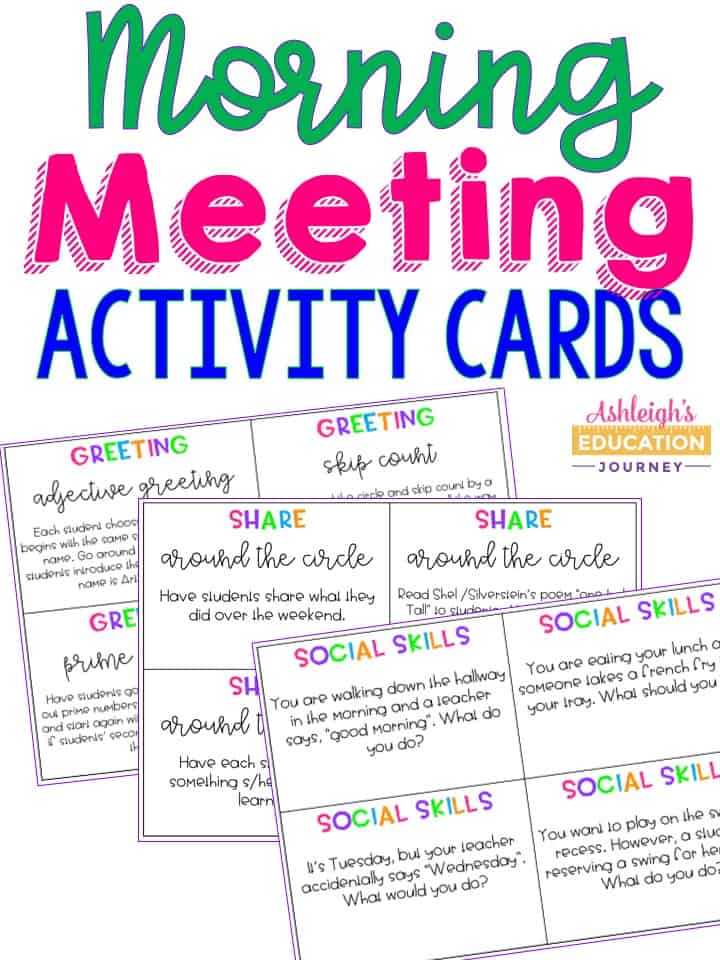
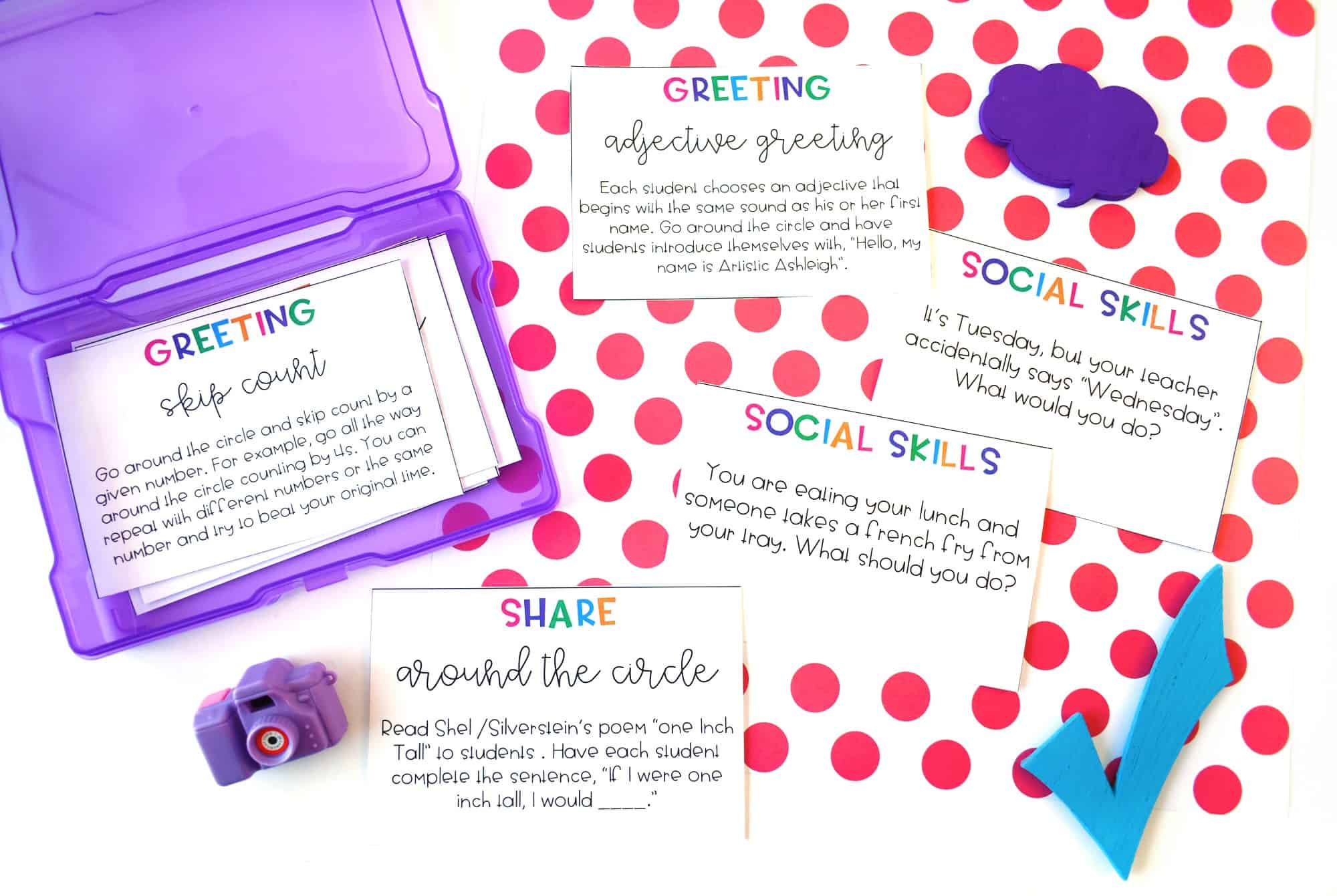
It sounds like a great way to start the day. From what I’ve read, it is possible to whittle the time down to about 15-20 minutes. You can read more about morning meetings here.
Hopefully these lessons will help your classroom become a more caring and empathetic community of learners. What strategies have you found to be successful in teaching empathy?

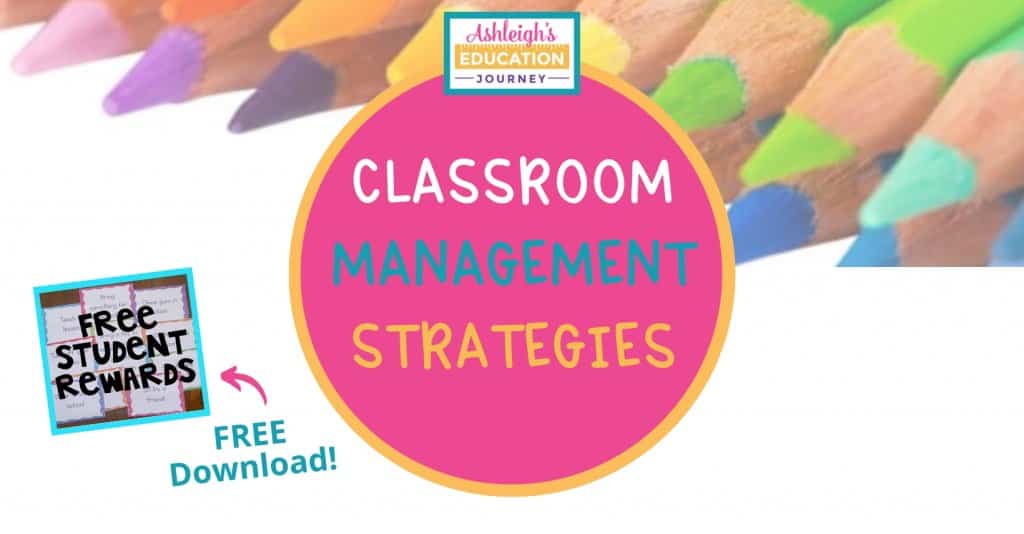
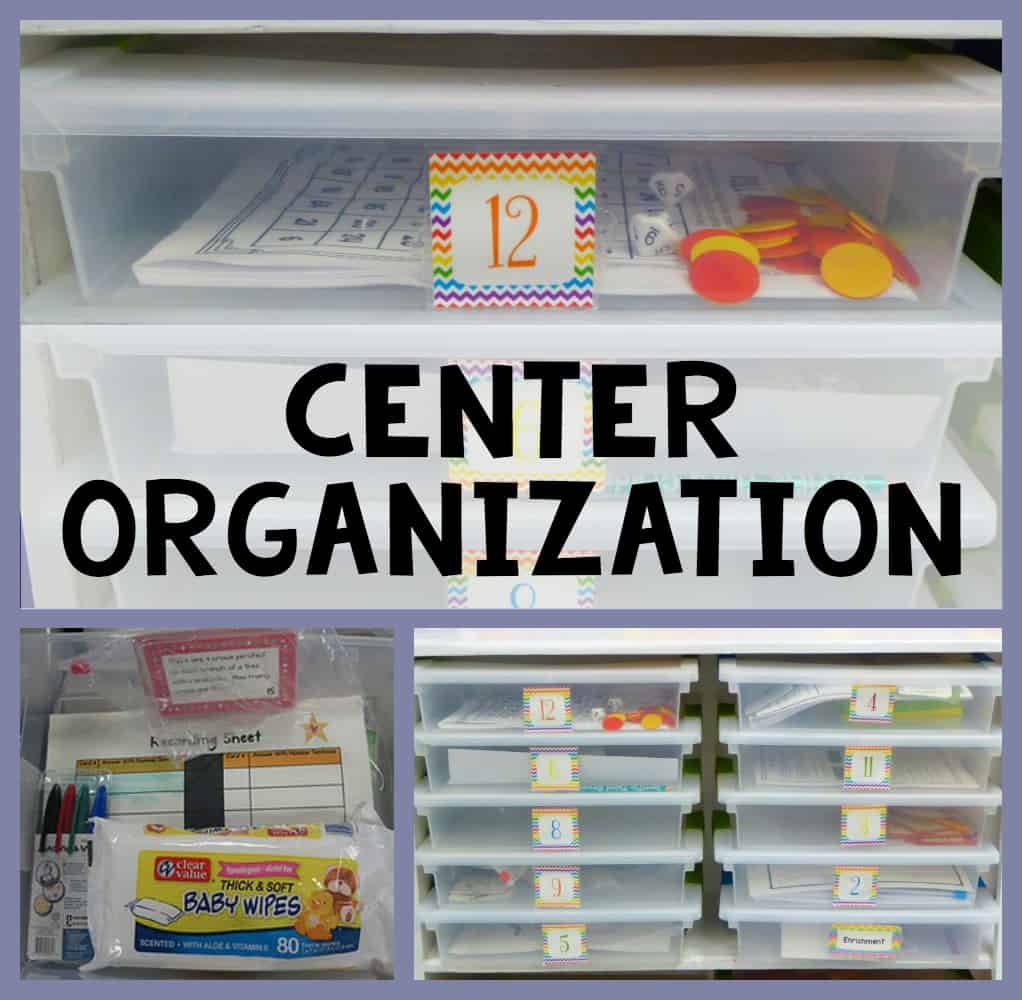
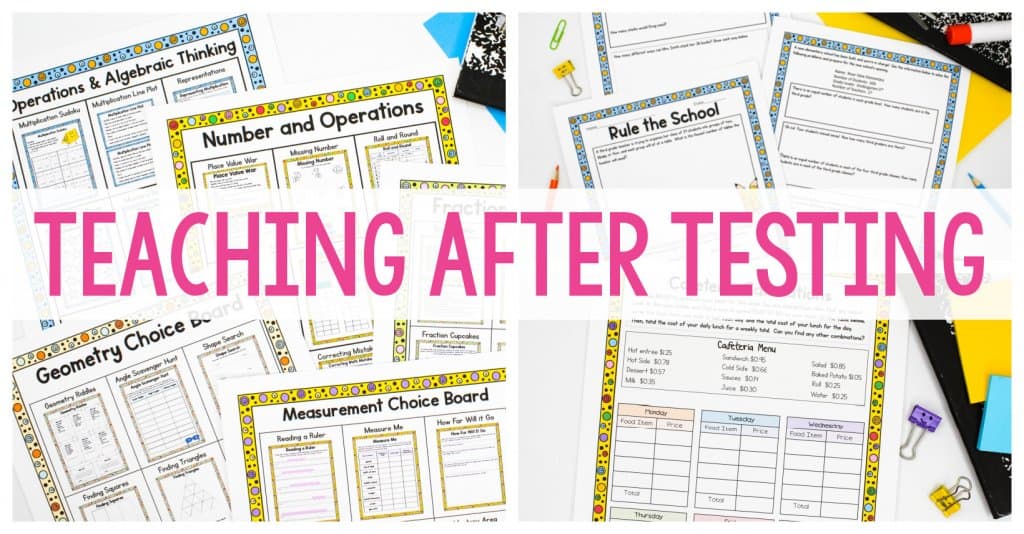
I love your blog posts and your products as well. I tried to download the morning meeting cards but they weren’t with the link. Can you help guide me to the right place to find them? Thanks,
Hollie
Thank you! The link is a bit above the picture.
Hi Ashleigh
I am enjoying reading your blog!
I have been a high school teacher for 25+ years and have now switched to primary teaching in 2018, so I am really interested in your ideas about structuring the morning meeting. At the moment we just have a round table conversation (I teach in a small rural school in Australia: 3 days a week I only have 10 grade 3-6 students and the other 2 days I take the whole school prep-6 18 students). After reading your post I am really thinking about making this time more structured, especially on whole school days, and focused on social learning.
Keep blogging … I promise to keep reading 🙂
cheers
Diggers27
This post is awesome. I can’t wait to use the Morning Meeting cards with my 4th graders! I am always looking for a way to teach social skills more consistently throughout the day.